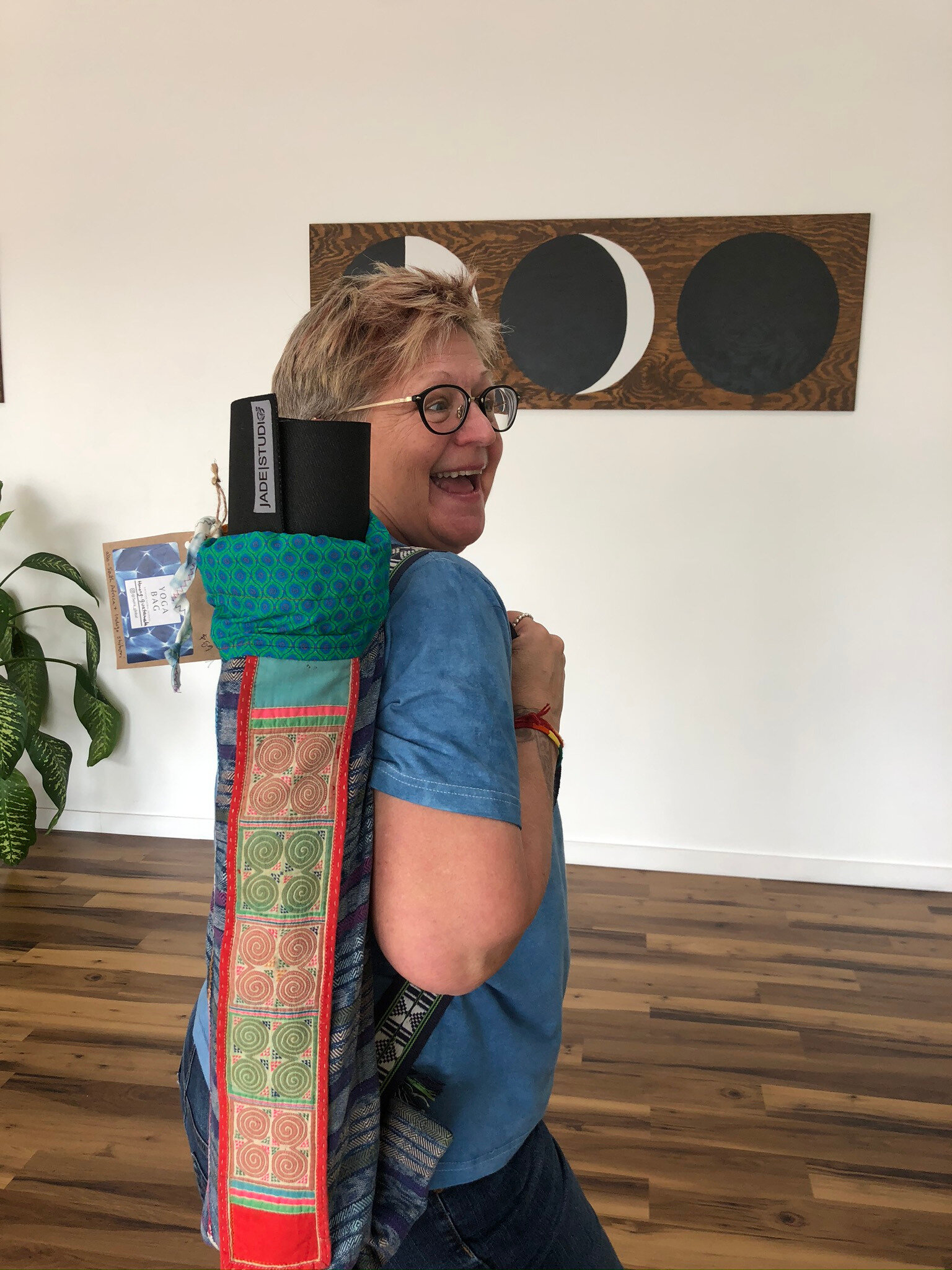Handmade yoga mat bags by Kim Hammer
The Importance of Cultural Appreciation
by kim hammer
We live in a globally connected world, and news from across the planet is just a tap away. Many of us have an affinity for the art, culture, and spiritual practices of faraway lands, and it is important to develop a true understanding so as not to use cultural symbols and icons insensitively. You may have seen rituals and symbols posted on social media simply to garner likes and views, without regard to their deeper meaning.
Cultural Appropriation
Cultural Appropriation is the act of using another’s culture without a proper understanding, perhaps simply as a fashion statement or to follow popular trends. Appropriation also occurs when a traditional hand-crafted design/technique is digitally copied and mass-produced, without acknowledgement of the original artisan or the traditional technique.
Cultural Appreciation
Cultural Appreciation however, occurs when you seek the stories from other cultures, and aim to open your eyes and ears to the original meaning. In this way, you can avoid disrespecting important cultural images and practices, and develop cross-cultural understanding. By listening, we learn. And so….here is my story.
I have long been a sewist and maker, designing and creating “art to wear” jackets, vests and accessories after studying textile design at UW-Stout. I also developed a passion for travel as a young adult, and began collecting textiles from my journeys. Each region I visited has offered its own textile style, from Cowichan Indian knitting on Vancouver Island, to the bright floral embroideries from Hungary.
In the mid 90s, I travelled to India for the first time, in order to study with the yoga master Sri BKS Iyengar. From my first foray into the local market, I knew I was there for more than yoga, though I would not know why for several years. A return trip to India 2 years later was followed by 5 weeks trekking in the Himalayan Kingdom of Nepal. (My table is covered by a Nepalese weaving as I write.) Though I was hooked on international travel, it would be another 12 years before I would return to India. From 2009 until COVID hit, I travelled each winter to Asia to source textiles and other hand-crafted wares.
During the past dozen years, I devoted myself to studying textiles particularly from India and Indonesia, and developed a great love of embroideries from Kutch, block-printing from Jaipur, and ikat weavings from Indonesia. Each year, I traveled to India, Thailand, Indonesia, Malaysia and/or Nepal, for textiles, handicrafts, yoga, and to lead cultural travel tours. I took textile design workshops in the USA and abroad, and opened a fair-trade-inspired shop to support the artisans I met. I also acquired several beautiful lengths of vintage cloth from my mentor, Marion Nelson, who passed away 3 years ago.
When COVID hit earlier this year and travel ceased, I returned to my early love of sewing, making more than 150 masks. I then grew inspired to “marry” my love of yoga and textiles, creating yoga mat bags exclusively for Palm and Pine which feature 3-5 complimentary fabrics from a variety of countries. Using vintage embroideries from Rajasthan, India, sarongs from Bali, and indigo shibori which I personally dyed, each bag is truly one of a kind. I also sewed a collection of masks, available at both Palm and Pine studios, each with one or more hand-crafted fabrics (dyed by myself, or woven/printed/dyed by other artisans).
My intention is to inspire an appreciation for hand-crafted beauty and culture during this time without global travel. Each bag is labeled with my tag “SUTRA”, which translates as the “thread that binds it together” and is a nod to the Yoga Sutras, pithy aphorisms of truth from the yogic tradition. SUTRA also represents the way in which fabric is linked to culture. Each product description includes the countries of origin and a story regarding one or more of the fabrics/embroideries in that bag. Each layer of understanding offers a greater opportunity for respect for each individual and their culture, and more harmony in the world.


